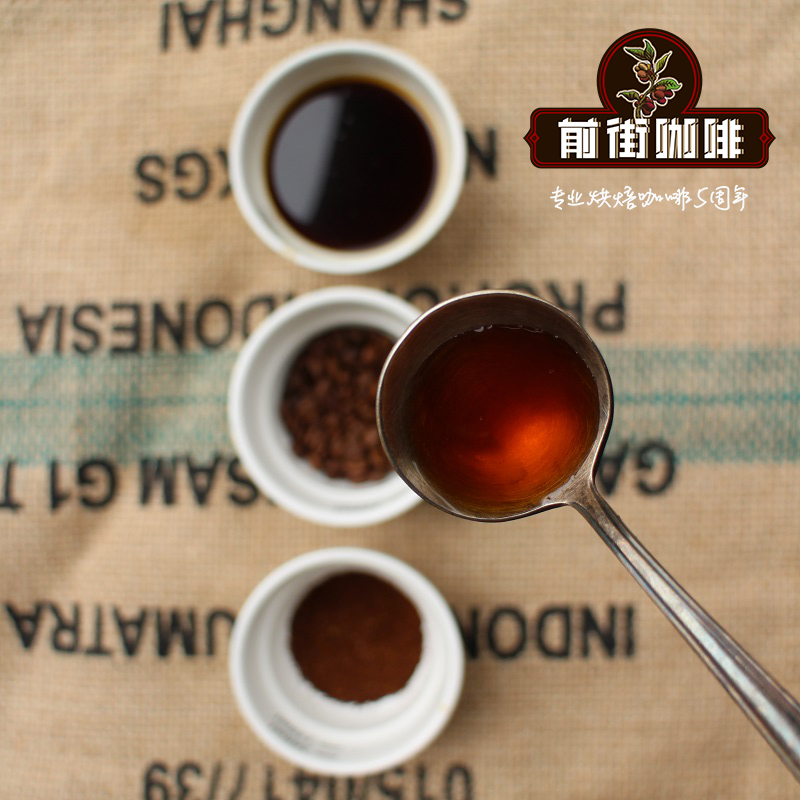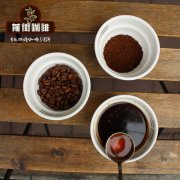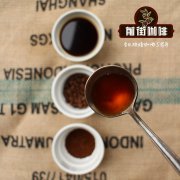Coffee tasting do you really know the sour coffee? what are the sour coffee?

I remember the first cup test class, like many others, it was most difficult for me to understand "flavor curve" and "flavor wheel". It all tastes good to me. Of course, some are sour than others, but they are still coffee.
In the end, I think it will be easier to remember the names of these different varieties of coffee and then remember the relevant flavor characteristics. Over the next few years, that's how I managed to become a mid-level barista, bluffing at the tasting after the cup tasting, "really know what I'm talking about," even though I really don't know what I'm talking about. From my spoon.
In the end, I was frustrated with the facade and decided that I wanted to really learn something at the cup tasting. I hope to be as excited about the taste as everyone else around me. I want to express my opinion instead of imitating the views of others.
From then on, I decided to continue to study food science and figure out the actual ingredients in coffee from a chemical point of view. I was so interested in this magical acidity that everyone else seemed to be trumpeting it.
This is what I tried to learn, which is the most meaningful to me, and I hope it is the same for you.
Acid is a chemical substance with sour taste. In fact, the Latin word "acid" literally means "acid". The pH value of acid aqueous solution is less than 7, and the lower the pH value is, the higher the acidity is.
Acid is a natural product of food, such as lemon, vinegar, yogurt and even coffee. There are hundreds of different acidic compounds in coffee alone, from familiar ones (such as citric acid) to hehe-what? (e. G. 4-monocaffeoylquinic acid). But for the purposes of this article, I will only discuss the primary acids that affect the taste.
Citric acid
Citric acid, as its name implies, is found in citrus fruits. In fact, it can account for almost 8% of the dry weight of these foods. There is no doubt that it is the most common acid in all fruits and vegetables and is the easiest to identify.
Malic acid
The taste of malic acid is usually associated with green apples (after all, it comes from the Latin word "malum", meaning "apple"). In rhubarb, you will find the purest malic acid, which constitutes the main flavor.
In the culinary world, malic acid is usually combined with limes, but it is much easier to think of it as "immature fruit". The concentration of acid usually decreases as the fruit ripens, so green, any organic matter such as grapes, kiwi or currants, will appear.
Tartaric acid
Tartaric acid is usually associated with grapes because of its high concentration in fruits. But it's not the only place you'll find it. Its salt, potassium hydrogen tartrate (commonly known as tartar cream), is naturally produced in the wine-making process and is usually used as a starter in food preparation.
The most remarkable feature of tartaric acid is the taste. It leads to mouth-watering madness and leaves an astringent aftertaste. In fact, it is one of the main ingredients of "super sour" candies and high-footed side dishes.
Acetic acid
Acetic acid is special. In addition to a very characteristic unpleasant smell, it also has a pungent unpleasant smell. When the content is low, it can make it have a pleasant sharpness or taste similar to lime, but when the concentration is high, its taste and smell are similar to fermentation.
This fashionable taste and smell, especially when used with other flavors (especially sugar), may lead to wine or champagne flavor.
PH value
So now you have a good understanding of different acids and their tastes. But what does it have to do with you tasting coffee like an orange?
The easiest way to understand acidity is to think of it as an abstract concept. "Orange acidity" doesn't mean your coffee literally looks like an orange. Its true meaning is closer to "it is as sour as an orange".
If you consider this explanation, the sudden tasting notes will become more meaningful. Because blueberries have lower acidity than lemons, coffee with "blueberry acidity" is undoubtedly less acidic than coffee with "lemon acidity". Does that make sense?
To help illustrate the model, I made a basic chart to associate ordinary fruit with its corresponding pH value. Of course, you can find more detailed, more detailed charts on most food science or FDA-type sites (although they may not pay much attention to coffee).
Combine flavor and PH
You may have noticed that within the pH range, the pH values of some fruits are similar, even if they taste completely different. Take apples and oranges as examples. So how does this work?
For apples and oranges, the main acids in each fruit are different. Green apples are mainly made up of malic acid, while oranges are full of citric acid.
Imagine a lovely, bright, light cup of African coffee. When brewing, the pH value is 4.6, so we are studying grapes, peaches, plums, pineapples and so on. Then you will find that it leaves an astringent taste in your mouth, which is the characteristic of tartaric acid. You may define it as "grape acidity", or any of the sour kernel fruit family (such as sour cherries, plums, etc.). This grape-like acidity combined with the fermented taste of acetic acid can even bring you wine-red acidity.
Similarly, citrus flavors with low pH values can be identified as "lemon acidity", while sour flavors with higher pH values may be closer to orange. More malic acid flavors with lower pH values may be lime, while those with higher pH values can be classified as rhubarb, green apples or even grapefruit.
Once you know all this, the cup test becomes much easier. Forget to forge it, you just need to know it.
Extract the sense of taste
It's always a good thing to try a variety of flavors to practice cup testing skills. Tasting all kinds of acidic substances can only make your acidity go up to another tall building!
What I used to do was buy these pure acids and make them into 1-2% solutions from distilled water. This is perfect for beginners. Since you don't have to taste all the other flavors, such as sweetness or bitterness, the results are really unique.
After a clear understanding of the taste of pure acid, move to some actual food. Get a lot of fruit, vinegar, and even wine, and start classifying them according to the acids you taste the most.
The problem with cup testing is that, once mastered, it can not only help you understand coffee, but also make drinking coffee more interesting. Although the characteristics of acids may seem daunting, once you know what you are looking for, they are actually easy to distinguish. Before you know it, you will become an acid expert.
Important Notice :
前街咖啡 FrontStreet Coffee has moved to new addredd:
FrontStreet Coffee Address: 315,Donghua East Road,GuangZhou
Tel:020 38364473
- Prev

What is the third wave of coffee? is there any difference between the third wave of coffee and boutique coffee?
The third wave of coffee, we always come across this phrase in coffee shops or online. But what does it actually mean? How is it different from specialty coffee? What are the first, second and fourth waves? It is not easy to define the third wave. You will hear different explanations everywhere-some even contradict each other! So we contacted some industry experts and asked them how to define it.
- Next

Coffee roasting Why Coffee roasting is important to learn what knowledge is needed for roasting
Coffee beans are seeds that ripen in coffee cherries. They are then processed and dried into coffee beans. Before baking, coffee beans are green and have the smell of tofu and grass. In fact, raw coffee beans don't smell like coffee at all. When we bake coffee, we produce 8 to 1000 different aroma compounds. These compounds give the coffee a flavor. Through baking analysis, I
Related
- Beginners will see the "Coffee pull flower" guide!
- What is the difference between ice blog purified milk and ordinary milk coffee?
- Why is the Philippines the largest producer of crops in Liberia?
- For coffee extraction, should the fine powder be retained?
- How does extracted espresso fill pressed powder? How much strength does it take to press the powder?
- How to make jasmine cold extract coffee? Is the jasmine + latte good?
- Will this little toy really make the coffee taste better? How does Lily Drip affect coffee extraction?
- Will the action of slapping the filter cup also affect coffee extraction?
- What's the difference between powder-to-water ratio and powder-to-liquid ratio?
- What is the Ethiopian local species? What does it have to do with Heirloom native species?

